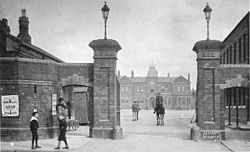| Seaforth Barracks | |
|---|---|
| Seaforth, Merseyside | |
 Seaforth Barracks | |
| Site information | |
| Type | Barracks |
| Operator | |
| Location | |
| Coordinates | 53°28′07″N03°00′57″W / 53.46861°N 3.01583°W |
| Site history | |
| Built | 1882 |
| Built for | War Office |
| In use | 1882-1958 |
| Garrison information | |
| Occupants | King's Regiment (Liverpool) |
Seaforth Barracks was a military installation at Seaforth in Merseyside.
